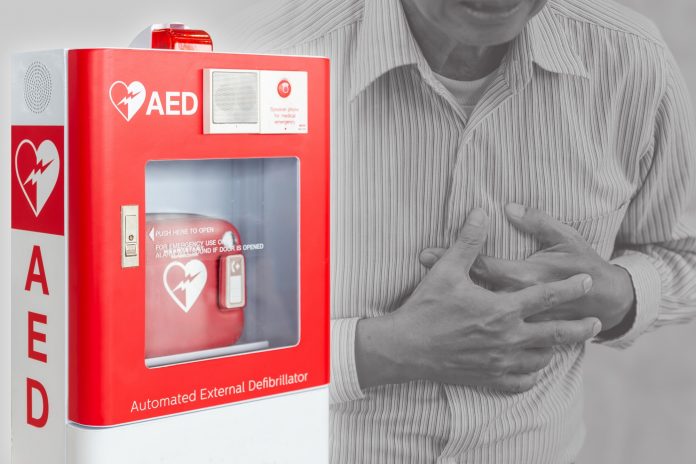According to the authors of research recently published in the Medical Journal of Australia, people who suffer a cardiac arrest while in a GP clinic are twice as likely to survive if they are promptly defibrillated with an automated external defibrillator (AED) rather than waiting to be defibrillated after paramedics arrive.
While the researchers call on all general practices to have an AED on-site as standard practice, this is something that could be extrapolated to community pharmacies – it’s something pharmacies should also consider in ensuring patient safety.
“To effectively manage a patient experiencing a cardiac arrest, clinic staff must immediately undertake the initial steps in the ‘chain of survival’: call 000, provide cardiopulmonary resuscitation, and perform defibrillation with an automated external defibrillator (AED),” write the authors, led by Brian Haskins, a paramedic lecturer at Monash University.
“Although clinic administrative staff must undertake cardiopulmonary resuscitation training every three years, accreditation by the Royal Australian College of General Practitioners (RACGP) does not require general practices to have onsite AEDs.”
Haskins and colleagues analysed data from the Victorian Ambulance Cardiac Arrest Registry, looking for patients who had non-traumatic cardiac arrests who emergency medical services staff attempted to resuscitate, between 1 January 2000 and 30 December 2019.
They found 6363 cases of cardiac arrest: 216 in general practice clinics (3.4%) and 6147 witnessed by paramedics (96.6%).
The study authors found that for patients who had a cardiac arrest, the “odds of survival were greater following paramedic-witnessed events or general clinic arrests with defibrillation by clinic staff”, compared with those arrests “in which arriving paramedics provided defibrillation”.
Given the results, Mr Haskin and colleagues call for AEDs to be made standard equipment in general practice clinics to enable prompt defibrillation when required – a consideration also for community pharmacies.
For more information and to read the research, visit: onlinelibrary.wiley.com/doi/10.5694/mja2.51139








